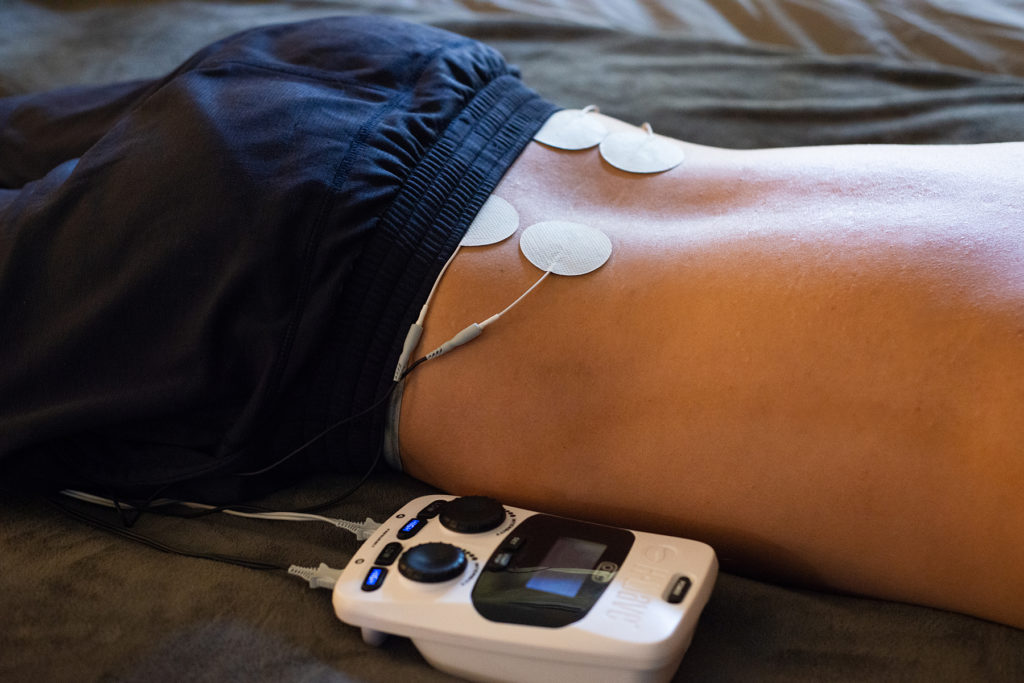Managing Low Back Pain Post-Surgery
Chronic pain patients, surgery patients, and physicians unfamiliar with H-Wave can benefit greatly from understanding the capabilities of the H-Wave unit. In this blog post, we will explore how the H-Wave can be a game-changer for managing low back pain post-surgery or injury. Dr. Kelly Starrett, a Physical Therapist and Human Performance Expert, provides valuable insights into the benefits and usage of the H-Wave device.

Understanding the Challenges of Post-Surgical Pain
Dr. Starrett emphasizes the challenges associated with managing pain around the spine, especially after chronic conditions or surgical interventions. The central nervous system tends to upregulate the perception of pain, making it crucial to find effective solutions that do not rely solely on pharmacological interventions or narcotics. The goal is to achieve pain relief while maintaining functionality, improving sleep, and enhancing overall well-being.
The Dual Functionality of H-Wave OTC
The H-Wave OTC offers a dual approach to pain management after spinal surgery. It facilitates movement and decongestion while also providing on-demand pain relief. Dr. Starrett stresses the importance of these features in restoring mobility and initiating the healing process.
Setting Up H-Wave OTC for On-Demand Pain Relief
Dr. Starrett guides users on the optimal setup for H-Wave OTC to achieve on-demand pain relief. The device comes with two leads – a gray lead and a black lead. Placement options involve positioning the leads above and below the painful area. This configuration allows for high-frequency energy to pass across the spine, helping the brain perceive the pain as less threatening.
Tailoring the Experience to Individual Comfort
A critical aspect of H-Wave OTC usage is individual comfort. Dr. Starrett emphasizes the importance of allowing users to control the intensity of the therapy. By gradually dialing up the energy until a comfortable buzzing sensation is felt, users can avoid muscle tetanus and ensure a positive experience. The device’s adaptability to different sensitivity levels, congestion levels, and nervous system states adds to its versatility.
Ensuring Safety and Effectiveness
Dr. Starrett underlines the safety measures associated with H-Wave OTC usage. Users are encouraged to pay attention to their comfort levels rather than focusing on numerical values. Additionally, he advises users to turn off the high-frequency setting promptly to prevent skin redness or irritation. Regular breaks during a 45-minute session are recommended, ensuring the skin has time to recover.
Varied Pad Placements for Targeted Relief
The blog explores different pad placement strategies, such as a high-low configuration or a cross-shaped arrangement. These options allow users to target specific areas and enhance the effectiveness of pain relief. The flexibility in pad placement contributes to the personalized and adaptable nature of H-Wave OTC therapy.
Integrating H-Wave OTC into Daily Life
Dr. Starrett highlights the significance of using the on-demand pain relief provided by H-Wave OTC as a window of opportunity. Users can engage in daily activities, rehabilitation exercises, or simply take a break during this pain-free interval. The goal is to break the pain cycle and reestablish a positive connection between the brain and the body.
In conclusion, H-Wave OTC emerges as a powerful non-drug intervention for managing low back pain symptoms post-surgery. Its ability to provide immediate and lasting pain relief, coupled with its user-friendly features, makes it a valuable asset for chronic pain patients, surgery patients, and healthcare professionals. By understanding the proper setup, individualized usage, and safety precautions, users can leverage H-Wave OTC to reclaim mobility, reduce pain, and enhance their overall quality of life.